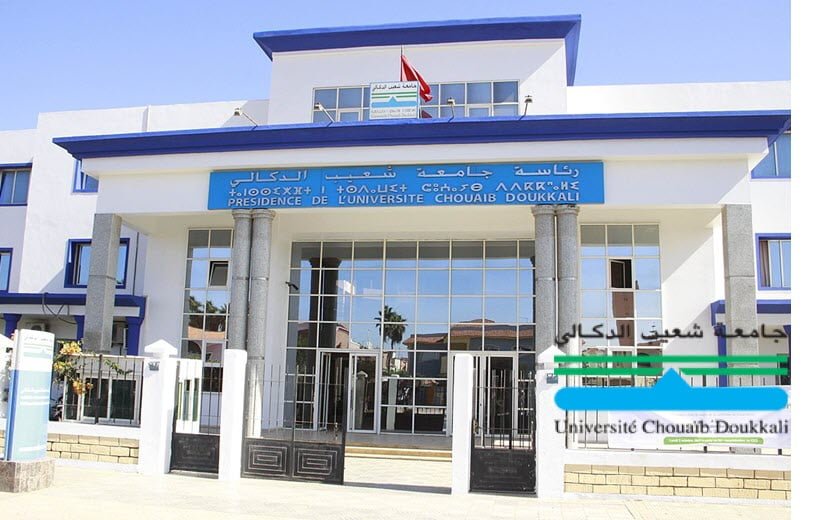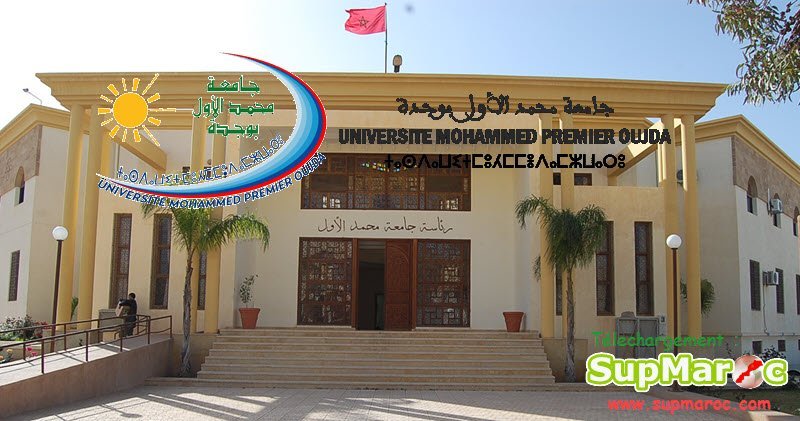La Faculté des Sciences et Techniques de Béni Mellal
Appel à Candidature
la licence Sciences et Techniques ( LST): Génie Mécanique
Option : Conception et Fabrication Mécanique 2013-2014

La Faculté des Sciences et Techniques de Béni Mellal lance un appel à candidature pour la licence
Sciences et Techniques Génie Mécanique, Option : « Conception et Fabrication Mécanique»
Conditions d’accès
L’accès à la licence Sciences et Techniques «Conception et Fabrication Mécanique» est ouvert aux titulaires d’un DEUST, BTS, DUT ou équivalent dans le domaine de Conception et Fabrication Mécanique.
Après étude du dossier de candidature et sélection selon des critères (diplômes, prérequis*, mentions, nombre d’années d’étude, relevé de notes ….), un test écrit aura lieu pour les candidats retenus suite à l’étude de leurs dossiers.
*construction mécanique, fabrication mécanique, RDM et mécanique de fluide.
Dates à retenir
– Dépôt du dossier: avant le 05 Septembre 2013
– Résultats de présélection (via le site de la Faculté) : 7 Septembre 2013
– Test Ecrit : 10 Septembre 2013
– Résultats définitifs : 12 Septembre 2013.
– Début des cours le 16 Septembre 2013.
Pièces à fournir
Le dossier de candidature est constitué de :
– Une demande manuscrite, mentionnant clairement les coordonnées du candidat et adressée à Monsieur le Doyen de la FST;
– Copies de tous les diplômes obtenus par le candidat (ou les attestations de réussite) ;
– CV du candidat ;
– Les relevés de notes des années d’étude universitaires ;
Les candidats répondant aux conditions d’accès sont invités à déposer leur dossier de candidature avant le 05 septembre 2013 auprès du bureau d’ordre de la FST ou à l’envoyer à l’adresse suivante :
Monsieur le responsable de la filière LST- Génie mécanique
Faculté des Sciences et Techniques de Béni Mellal
BP 523, 23000 Béni Mellal Maroc







Geni Electrique?
Then we should apply the same rule to the other pntalupioos: pre-Dutch, pre-Scandinavian, etc. What a nonsense! Scandinavian is a geographic denomination, not ethnic. Never heard of pre-Dutch before (after all they are a branch of Middle Germans, we know the name of heir predecessors). But terms like pre-Indoeuropean, pre-Semitic, pre-Celtic, pre-Greek do exist and are applied. Celtic implies speaking Celtic languages, the people living in the islands in the times of Stonehenge did with all likehood not spoke Celtic nor had Celtic culture, even if we don’t know which was their acual languages or ethnonymes. I agree with Maju here, for clarity.Thanks. When agriculture first arrived on the isles, the language these people spoke likely was just an early form of Indo-EuropeanMost probably not. Most probably agriculturalists never really arrived in meaningful numbers, rather locals were seduced by such economical practices, gradually, possibly with some minor demic input initially. Also with all likehood Central European Neolithics did not speak Indoeuropean. Some have suggested Semitic or other Afroasiatic languages, others Basque-related languages, or « Pelasgian », etc. But the really wise ones suggest nothing: the evidence is lost. And Indoeuropean is quite clearly derived from an steppary core (Samara valley, Russia) and expanded at a later date (Chalcolithic for Europe east of the Rhin, even later in Western Europe and South Asia). I have discussed this issue a zillion times and the Kurgan model always wins, while Renfrew’s fantasies are shown as what they are: baseless romanticism….and does not require the mysterious disappearance of Celts in Middle and Southern Germany, and in Austria. They never disappeared: they became Germans and Romans. There is no « mystery ». What the heck?!There is a well known process of expansion of Germanic tribes from Northern Europe « sensu stricto » southwards. This is well attested both archaeologically and historically. The reason for this push, parallelled by the Roman expansion from the south and the Dacian one from the East, into Celtic territory was that Celts had gone semicivilized in the La Te8ne period, having too much concentration of the economy and power structures in their trading towns (often known as « oppidae »). The destruction of such cities simply meant that the whole economic and social network of Celts could be destroyed with them, something that Germanics apparently enjoyed doing (lots to plunder). When Caesar intervened in Transalpine Gaul, he did moved by the troubles that Germanics were causing. Germanics had conquered the Helvetians, which in turn had decided to mass migrate and attack Roman allies in the region. Romans could watch from the fence or intervene: they decided the latter and put a limit to Germanic expansion for the next several centuries. They also assimilated the conquered Celts gradually. Similar geostategical reasoing surely brought them to Rhaetia, Noricum, Panonnia and Britannia soon after: securing their borders and interests against the unruly tribes of the north, very especially the expansive Germanics. They even attempted to conquer Germania Magna itself.Is Celtic more closely related to Greek than to Germanic? Of course not…Probably yes (even if I share your escepticism re. lexical comparison). When Idoeuropeans migrated out of Eastern Europe in the late 4th milennium BCE, they did it in two distinct « waves »: one went to the Balcans and another to Eastern Germany (later expanded to Poland, which would in fact become the main center). Greek may well derive from the Balcanic branch, while the rest of European IE languages (excepting Albanian surely, as well as Iranian languages like Ossetian) seem to derive from the Central European branch. Greek is Indoeuropean, arguably Western Indoeuropean too but certainly from a different sub-origin than most other European languages, which derive from a common Central European core (Baalberge-Lubon-Globular Amphorae-Corded Ware). The whole genesis is not fuly understood but this difference between the Central European and Balcanic groups seems most likely IMO.
R1b = 13 occurred somrwheee about 6K to 8K years ago, possibly after the flood? Maju has a better feel for the archaeology, I just report the numbers. In my judgment very few of the old population left bloodlines and thus the emphasis on a more recent time frame.In my opinion, there was never any flood and you can trace the populations archaeologically step by step from Aurignacian to the present. Please: a few kilometers from my great-great-gandfather’s farmhouse there is a cave that has the whole sequence from Chatelperronian to the Iron Age (Santimamif1e). It’s maybe exceptional but it’s not the only case certainly. Anyhow, at no moment you get the feeling of discontinuity. Change for sure (but normally gradual) but never a widespread esterile layer or a techno-culture that you cannot trace to the previous one quite nicely. And certainly no indications of any « flood » at all.And (this goes for the « Indoeuropeists ») when the Celts arrive, you see conflict at the Ebro border. And then written history arrives and the Celts are south of it (and north of the Garonne) and then linguists come and see no trace of Celtic influence in Basque (in contrast with a very strong Latin one, for instance). Etc. I could even take that Basque language is of Neolithic origin because languages can be replaced much more easily than genes. But I can’t find any good explanation for a genetic explosion following the Atlantic coasts that can be attributed to Neolithic or post-Neolithic events. It’s just that the data don’t fit well, or even poorly. I really couldn’t care less but when you look at it with some true interest you see continuity. Furthermore, you see a very strong population growth following Neolithic (more in the Chalcolithic period and thereafter, as Neolithic proper was short-lived and tenuous here). Even anthropometrically you see continuity, except partly in the Ebro area, where gracile Mediterranean types are relatively common. You have to present very solid evidence, much more than a MCH hunch, to persuade me that there was a demographic replacement in the Basque Country – or anywhere else in Atlantic Europe. In fact, I don’t see clear evidence even for any signifcative colonization in the Western Mediterranean – just a gradual, or more probably epysodical, flow of Eastern Mediterranean and, in Iberia, North African elements.